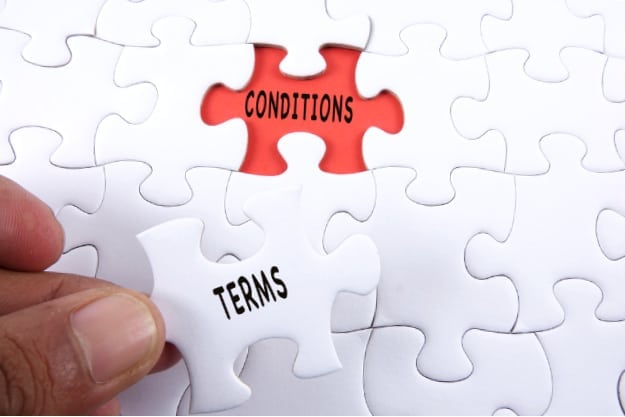One of the repayment options available to those with student loan debt is the income-based repayment (IBR) plan.
This strategy helps borrowers make their payments affordable by adjusting the payment caps according to the family size and income.
Learn more about income-based repayment through the 13 facts discussed below:
(Did You Know? There’s plenty of other repayment plans that you could benefit from if IBR isn’t the one for you. This 8-Plan Cheat Sheet breaks each of the best ones down for you, so you can easily select the one that best fits you and your lifestyle. Learn more and download it for free, here.)
13 Income-Based Repayment Facts to Consider
1. The Department of Education offers the income-based repayment plan
IBR is a particular type of plan categorized under the income-driven repayment plans for federal student loans.
The program has been available since 2009 and was part of Obama’s student loan repayment program.
Additionally, the Department of Education also grants affordable payments to those who cannot meet the payment of their monthly federal student loans through the Standard Repayment Plan.
2. Only select federal student loans are eligible for IBR
Income-based repayment, unfortunately, doesn’t include private student loans.
In fact, even for federal loans, in order to enroll in an income-based repayment plan, you need to contact your student loan service provider and check to see that you qualify.
The following are the types of federal loans which are eligible for income-based repayment:
- Direct PLUS Loans
- FFEL Consolidation Loans
- Federal Stafford Loans (unsubsidized and subsidized)
- FFEL PLUS Loans (graduate/professional students)
- Direct Consolidation Loans
- Federal Perkins Loans (consolidated and with the exemption of new borrowers)
- Direct Loans (subsidized and unsubsidized)
3. Federal loans made to parents are not included
FFEL PLUS Loans made to parents are not eligible for income-based repayment.
The same goes for Direct PLUS Loans to parents or Parent PLUS Loans.
4. Recertifying your income is necessary

Prior to the initial enrollment in the income-based repayment, you need to certify your income.
Further, every year the payment plans undergo a reevaluation.
Following this reevaluation, a review of your income annually is also required.
You’ll also need to resubmit your income in the case of job loss or income changes.
5. There are different eligibility options for borrowers before and after July 1, 2014
Borrowers after July 1, 2014, have an IBR payment cap of 10% of their income.
They are also eligible for forgiveness after 20 years of repayment.
On the one hand, borrowers who applied for loans before July 1, 2014 have a different plan.
Their income-based repayments allows up to 15% of their income.
Additionally, these borrowers need 25 years of repayment for forgiveness eligibility.
6. Monthly payments are easier to manage
Income-based repayment plans typically lower the monthly payments for your federal student loans.
This will certainly apply if you are earning an income lower than the balance of your student loan.
(Did You Know? There’s plenty of other repayment plans that you could benefit from if IBR isn’t the one for you. This 8-Plan Cheat Sheet breaks each of the best ones down for you, so you can easily select the one that best fits you and your lifestyle. Learn more and download it for free, here.)
7. As your income changes, payments are adjusted as well
In the event of a job loss, monthly payments can go to as low as $0, depending on your financial situation.
In the event that your income changes due to a marriage, keep in mind that you can combine yours and your spouse’s incomes and remain eligible for the IBR.
However, in cases of married couples who filed separately, you should indicate your status as “separated” in the application.
8. IBR allows eligibility for student loan forgiveness

After making full payments for 20 or 25 years, borrowers are now eligible for the student loan forgiveness program.
Still, even when forgiven, take into consideration that you’ll have to pay taxes on the forgiven amount.
To borrowers eligible for the Public Service Loan Forgiveness, the income-based repayment plan will also help in lowering payments.
That way, you can fully maximize each programs’ benefits.
9. Repayment for IBR plans takes 20-25 years
The 20-year repayment period applies to new student loan borrowers or those who took out loans after July 1, 2014.
For those who borrowed before July 1, 2014, the IBR plan repayment period is 25 years.
10. Income-based repayment uses a particular sliding scale
A particular sliding scale determines how many payments you can afford to make.
In addition, the IBR payment cap percentage computation consists of the borrower’s total family income and family size.
For example, family size calculations take into account whether you have a spouse, children, other family members, or dependents living with you.
11. IBR payment reductions don’t cover the interest on the loans
This means the government will pay any interest for the first 3 years in the income-based repayment plan for subsidized Stafford loans.
However, included in the total loan amount is the interest after 3 years, even for other types of loans.
Still, you can keep in mind that any debt after making qualified payments for 25 years is eligible for forgiveness.
12. There are certain qualifiers to consider

The eligibility for the income-based repayment plan’s forgiveness period of 25 years only applies if the borrower satisfies certain types of payments according to the Department of Education.
These criteria are the following:
- Payments made before July 1, 2009 under the ICR (Income Contingent Repayment) plan.
- Payments during and after July 1, 2009, in the ICR, income-based repayment, and the 10-year repayment (standard) plans.
- Granting of economic hardship deferment to a borrower happened on or after July 1, 2009.
- Periods when the calculated payment turned to zero in IBR due to the borrower’s income falling below 150% poverty level.
13. Signing up for income-based repayment is easy
Putting in an application for income-based repayments is easy.
All you have to do is obtain and fill out an income-driven repayment plan request.
Then, include your income and tax return information.
Remember that even if you choose to file separately from your partner, you should still include your spouse’s income.
The only time there is an exception is in cases of separation or other circumstances which hinder you from accessing your spouse’s financial information.
For more information on income-based repayment, watch this video from Bank of America:
Whether or not you should apply for the income-based repayment plan depends upon your financial goals.
Additionally, you need to consider the benefits you hope to achieve in the long run.
Considering other student loan repayment options before deciding to enroll for the IBR will ensure your chosen repayment plan fits and addresses your needs.
Should you decide to apply for the IBR, remember that it can help prevent a default on your payments, which later helps you avoid a bad credit report.
This payment plan also ensures future students will get the most out of the Federal Student Loan Program, as their payments are adjusted to fit the reality of each student’s situation.
(Did You Know? There’s plenty of other repayment plans that you could benefit from if IBR isn’t the one for you. This 8-Plan Cheat Sheet breaks each of the best ones down for you, so you can easily select the one that best fits you and your lifestyle. Learn more and download it for free, here.)
Do you have other income-based repayment ideas that you would recommend? Share your suggestions in the comments below!
Up Next: Income-Sensitive Repayment Plan


Leave a Reply